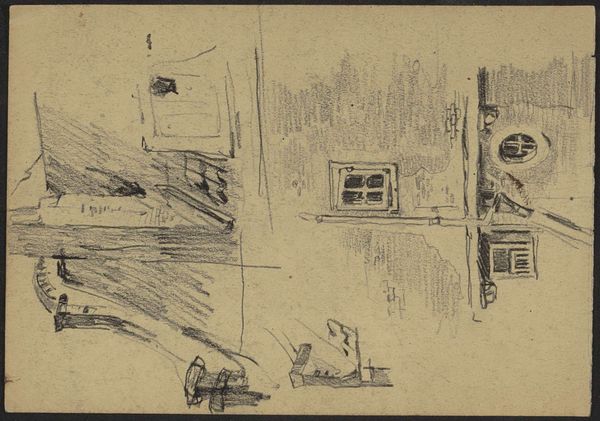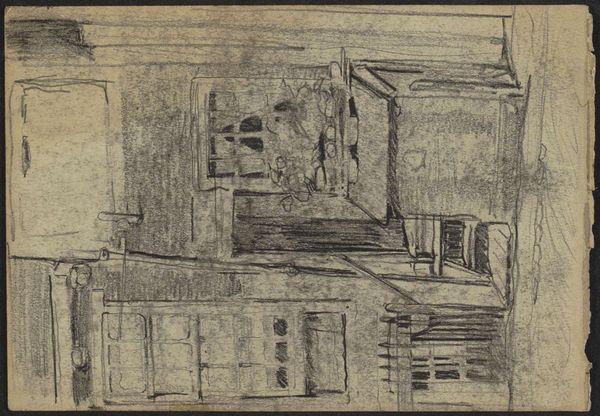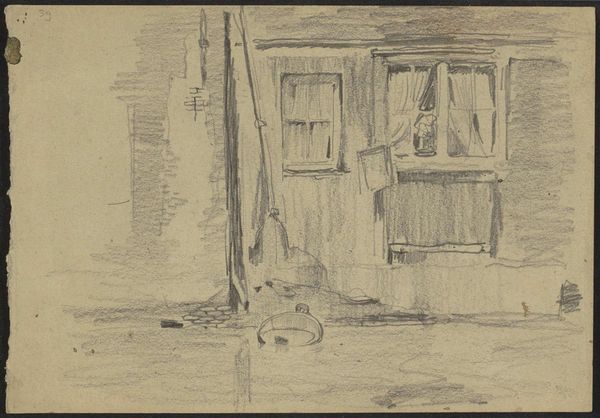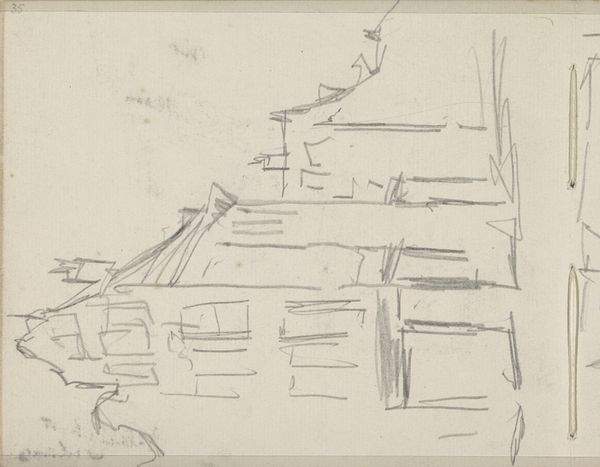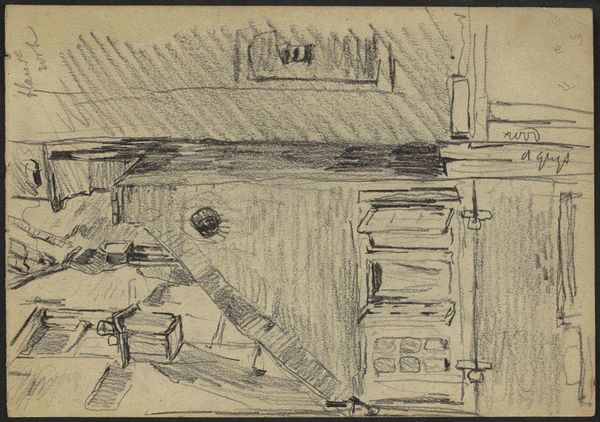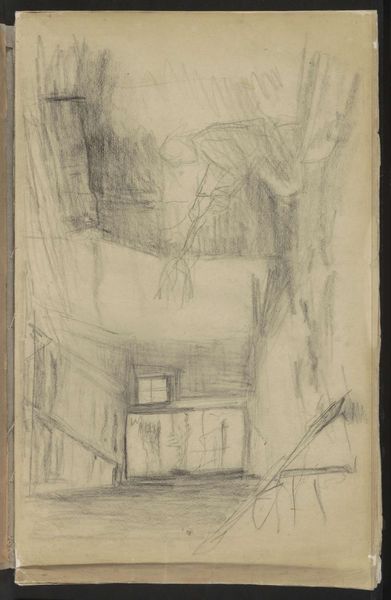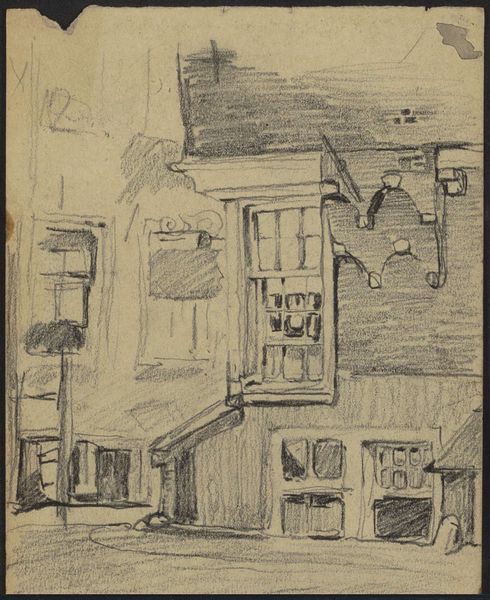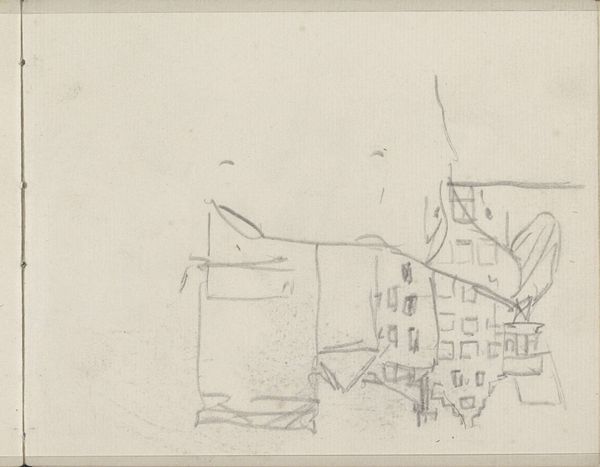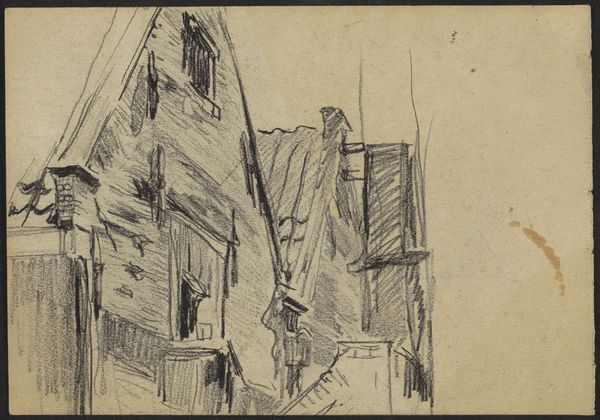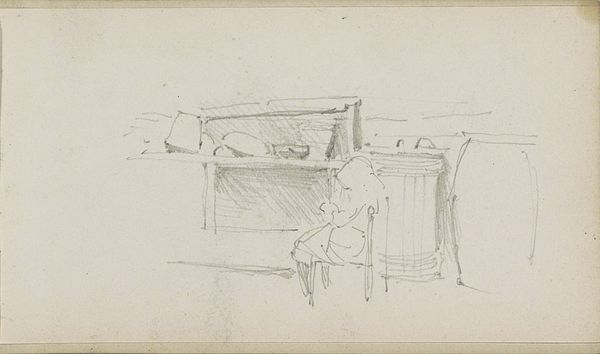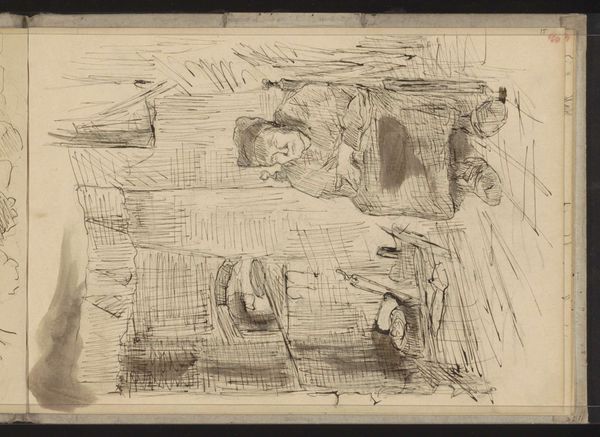
Gezicht op de achterkant van de huizen aan de Zeedijk in Amsterdam, gezien vanaf de Oudezijds Achterburgwal before 1906
0:00
0:00
drawing, pencil
#
drawing
#
ink drawing
#
pencil
#
cityscape
#
realism
Dimensions: height 139 mm, width 201 mm
Copyright: Rijks Museum: Open Domain
Editor: This drawing, "View of the Rear of the Houses on the Zeedijk in Amsterdam, Seen from the Oudezijds Achterburgwal," was made by Willem Witsen before 1906, using pencil and ink. It's part of the Rijksmuseum collection. There's something quite somber about it, with its muted tones and rather drab setting. What do you see in this piece, particularly regarding the location depicted? Curator: What strikes me is the 'backstage' view. Instead of grand facades, we see the mundane reality of urban life, stripped bare. The Zeedijk was, and arguably still is, a place of constant flux, a liminal space between land and water, respectability and disrepute. Editor: Liminal? Curator: Yes, a transitional space. This drawing avoids idealizing Amsterdam; instead, it shows the ordinary rhythms of life—someone working in the yard, perhaps, a glimpse into private lives. These visual symbols challenge our romantic notions of cityscapes. We are accustomed to seeing order and harmony. However, here Witsen confronts us with a raw authenticity that lingers in the cultural memory of Amsterdam as a port city. Editor: So, by choosing this view, Witsen conveys more than just the appearance of the place. Curator: Precisely. The symbols—the window, the figure in the yard—speak to the collective, perhaps even the suppressed, memory of a working-class existence in a global trade hub. Do you get the sense that there are layers beyond what’s immediately apparent? Editor: Yes, now that you mention it, there’s a sense of unseen narratives woven into the architecture itself, wouldn't you say? The drawing holds so much more than what first met my eye. Curator: Exactly, art invites this kind of cultural dialogue, it challenges assumptions through its rich, multi-layered imagery.
Comments
No comments
Be the first to comment and join the conversation on the ultimate creative platform.
